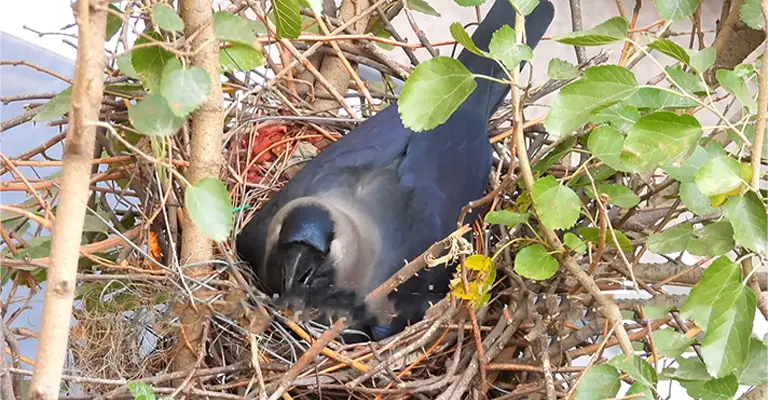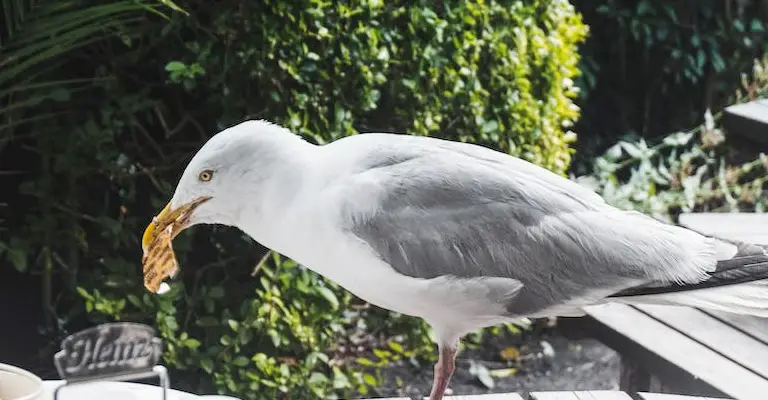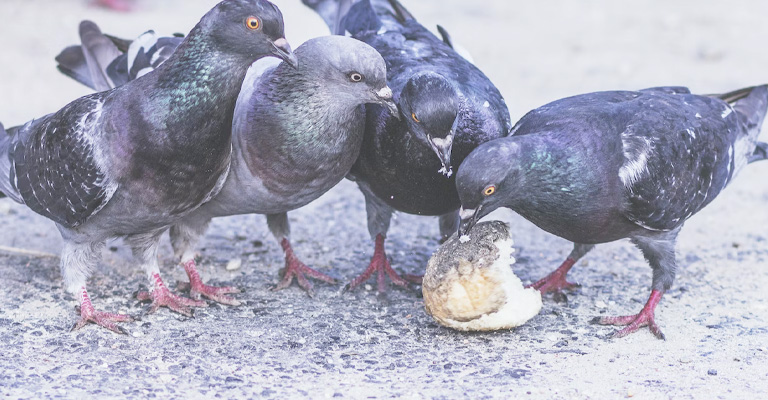Curiosity and fascination with shiny objects have captivated human minds for centuries. But what about our intelligent avian counterparts, particularly crows? Crows are known for their exceptional problem-solving skills and adaptability, leading to speculation about their attraction to shiny objects.
This intriguing behaviour has piqued the interest of researchers and bird enthusiasts alike. In this article, we explore are crows attracted to shiny objects. Exploring the scientific studies and observations that shed light on this avian phenomenon.

Are Crows Attracted to Shiny Objects?
Curiosity and fascination with shiny objects have captivated human minds for centuries. But what about our intelligent avian counterparts, particularly crows? Crows are known for their exceptional problem-solving skills and adaptability, leading to speculation about their attraction to shiny objects.
This intriguing behavior has piqued the interest of researchers and bird enthusiasts alike. Here, we delve into the question of whether crows are truly attracted to shiny objects, exploring the scientific studies and observations that shed light on this avian phenomenon.
Natural Curiosity and Novelty
Crows are brilliant birds with a natural curiosity that drives them to explore their surroundings. Shiny objects like jewellery, coins, or even glass fragments can catch their attention due to their unique visual properties.
The reflective surfaces of these objects present a novel and potentially rewarding stimulus for crows, triggering their innate curiosity to investigate further.
Nesting and Mate Selection

Shiny objects may also affect crows’ nesting and mate selection behaviours. Male crows sometimes collect and present shiny objects to female crows as part of their courtship displays.
These objects can serve as gifts, demonstrating the male’s ability to provide and potentially attract a mate. Similarly, shiny objects can be incorporated into nest construction, potentially indicating the crow’s ability to acquire valuable resources.
Associative Learning
Crows are skilled at associative learning, which involves connecting stimuli and outcomes. Shiny objects, particularly those associated with food or other rewards, can become targets of interest for crows due to previous positive experiences.
For example, if a crow discovers that shiny objects are often associated with finding food scraps or receiving human attention, they may prefer such items.
Ecological Factors
Crows’ attraction to shiny objects may also have ecological implications. Crows may adapt to exploit these resources in urban environments, where human-made shiny objects are abundant.
They may scavenge for discarded items or repurpose shiny things for their purposes, such as using them as tools or decoys. This behaviour highlights crows’ adaptability and ability to capitalize on available environmental resources.
Are Other Birds Attracted To Shiny Things?

While crows are commonly associated with an attraction to shiny objects, they are not the only birds that display this behaviour. Several other bird species are also interested in shiny things for various reasons.
Here are a few examples:
Magpies
Magpies are renowned for their attraction to shiny objects. They are naturally inclined towards collecting and hoarding shiny items, including coins, jewellery, and other small trinkets.
This behaviour is believed to be driven by their innate curiosity and tendency to collect items for their nests. Magpies often incorporate shiny objects into their nests as decorations or to signal their presence to other birds.
Bowerbirds
Bowerbirds, known for their elaborate mating displays, have a particular affinity for collecting and displaying shiny objects.
Male bowerbirds construct elaborate bowers or show structures adorned with various items, including brightly coloured and shiny things like berries, shells, or even pieces of glass or metal.
These objects serve as visual cues to attract potential mates and demonstrate the male’s resourcefulness and ability to provide for a future family.
Pigeons

Although not commonly associated with shiny object attraction, Pigeons have been observed showing interest in reflective surfaces. They may peck or interact with shiny objects in urban environments, such as windows, car mirrors, or metal surfaces.
The reflective nature of these objects can capture their attention and curiosity, leading to brief interactions or exploration.
Lyrebirds
Lyrebirds, known for their remarkable ability to mimic various sounds, have been observed displaying an interest in shiny objects.
These ground-dwelling birds may collect and incorporate shiny items, such as feathers, bottle caps, or pieces of foil, into their display areas, called “midden heaps.”
It is believed that the lyrebirds’ attraction to shiny objects is related to their desire to create visually striking displays to attract mates during courtship rituals.
Puffins
Although not primarily known for collecting shiny objects, puffins have been observed interacting with and carrying shiny items in their beaks. In some cases, puffins have been seen picking up small, shiny fish or objects from the water’s surface.
While the exact motivation behind this behaviour has yet to be fully understood, it may be related to the puffins’ feeding habits or mistaken identification of the objects as potential food sources.
How Crows Behave Seeing a Shiny Thing?

When crows encounter a shiny object, their behaviour can vary depending on the individual bird and the context in which the encounter occurs. Here are some common behaviours exhibited by crows when they see a shiny thing:
Investigation and Curiosity:
Crows are naturally curious creatures, and upon spotting a shiny object, their initial response is often one of investigation. They may approach the thing cautiously, using their sharp beaks and agile feet to examine and manipulate it.
Crows may tilt their heads, peck at the shiny surface, or even pick up the object and carry it to a different location for further examination.
Vocalizations and Alarm Calls:
In the presence of a shiny object, crows may emit various vocalizations and alarm calls to communicate with other nearby crows. These calls serve as a way to alert other members of their group or nearby crows of the potential threat or exciting discovery.
The specific vocalizations can range from rapid “caw” sounds to more complex vocalizations that indicate excitement or concern.
Playful Interactions:
Crows are known for their playful behaviours, and encountering a shiny object can often trigger their playful instincts.
They may engage in playful interactions with the object, picking it up, tossing it in the air, or even engaging in games of “keep-away” with other crows in their group.
These playful behaviours provide mental stimulation and allow the crows to explore the object’s physical properties and test their agility.
Collecting and Hoarding:
Crows may sometimes collect and hoard shiny objects, much like magpies. They may pick up small shiny items they come across, such as coins or pieces of jewellery, and carry them to a specific location for storage. This behaviour is often linked to their innate tendency to collect items for future use or display purposes.
It’s important to note that individual crows may respond differently to shiny objects based on their previous experiences, environmental factors, and specific characteristics.
These behaviours reflect the crows’ intelligence, curiosity, and adaptability as they interact with and explore their environment uniquely and intriguingly.
FAQ
Yes, crows have naturally attracted to shiny objects, and their behaviour often involves investigating and interacting with them.
Crows’ attraction to shiny objects can include their curiosity, nesting behaviours, associative learning, and the visual appeal of reflective surfaces.
While it is a standard behaviour among crows, individual birds may vary in their level of interest in shiny objects based on their experiences and personality.
Crows may exhibit investigation, playful interactions, vocalizations, and occasionally collecting shiny objects for nest building or display.
Shiny objects can serve practical purposes for crows, such as reinforcing nests, attracting mates during courtship displays, or potentially being associated with food sources.
Conclusion
Whether crows are attracted to shiny objects reveals a complex interplay of innate behaviours and individual experiences.
While evidence suggests that crows have a natural inclination towards shiny items, the reasons behind this attraction are multifaceted and require further investigation.
It is clear that crows’ interest in shiny objects extends beyond mere curiosity and may have practical implications in their ecological context.
As we continue to unravel the mysteries of these intelligent birds, further research will undoubtedly deepen our understanding of the intricate relationship between crows and shiny objects, enriching our knowledge of avian behaviour and cognition.